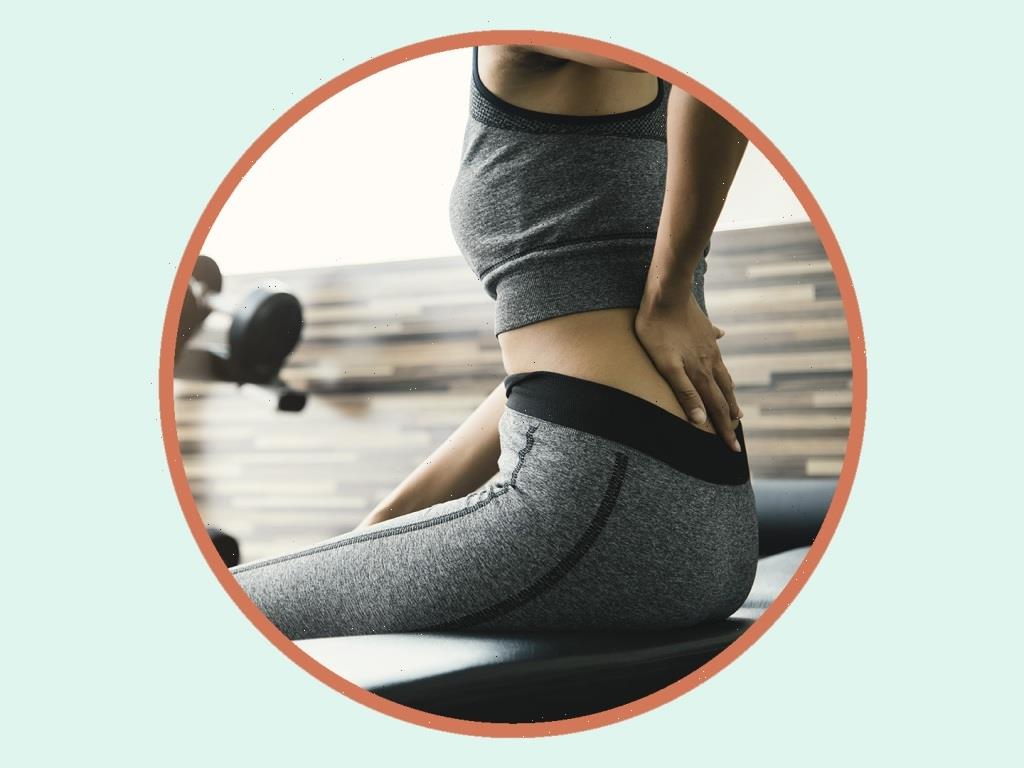It’s been a minute — okay, a long minute – since you’ve last hit the gym. Now you’re excited and ready to get back into an exercise routine. Congratulations! However, sometimes our enthusiasm can get the best of us especially when it comes to potential injuries.
“It is common to get injured from working out, especially after taking a break from exercise, as many individuals tend to push their bodies too hard too fast,” Dr. Andrew Konen, physician and pain relief expert, tells SheKnows. “It is extremely important to stay cognizant of your fitness level, always taking resting periods and being as cautious as possible to keep your body healthy and injury-free.”
The good news is avoiding injuries is possible by following the advice from trainers and experts below.
Common reasons why people get injured from working out
The most common injury people encounter? Strains and sprains, says Dr. Konen. “This is because it is easy to stretch or tear the tissue of your muscle during physical exertion and this injury can even be caused by minor trauma. “
According to Onyx trainer Kim DiLandro common reasons for injury include poor form, overdoing exercise, and not allowing proper recovery time.
“Poor form can come from lack of understanding of how to do a movement, doing too advanced of a movement or using too heavy of weight,” she says. “Whether starting a new routine or getting back into one after time off, overdoing it too soon is a common mistake that leads to injury. And, not allowing the body time to recover between workouts can cause extra strain and physical exhaustion on the body which can lead to injuries.
Essentially, says Katia Pryce, CEO and founder of DanceBody, the most common reason why people get injured is that they aren’t listening to their bodies.
“There’s a big difference between pushing through when you feel you want to quit because it’s hard, and pushing through when you feel actual, sharp pain. Go at a slower pace if you’re just starting out or coming back to your workout after a break. We say this in DanceBody classes all the time — you have permission to modify!”
Now, read on for tips on how to avoid injuries while working out.
Ask a professional
“Exercise looks different for everyone. It’s not a one size fits all approach,” says DiLandro. “A professional can use your current movement patterns, lifestyle and training goals to make a customized program for you.”
Never start cold
Pryce recommends beginning each workout with dynamic, movement-based stretching to warm up your muscles and activate them before you start truly engaging them.
“It’s like the cocktail hour before the party,” Pryce says. “You need to warm up to really have a fun and effective workout.”
Take it slow
Whether you are starting a training program for the first time or are just getting back into a routine, DiLandro wants you to take your time: “Overdoing training volume or intensity too soon could put unnecessary stress on your body which could lead to injury.”
Keep your footwear updated
“So many people work out in old sneakers that offer zero support,” says Pryce. “Your feet are the foundation of your body and need the best structure to keep you moving.” She recommends rotating between a couple of good supportive pairs as well.
Increase your focus on strength training
“There is a reason strength training has never gone out of style,” says DiLandro. “Strength training protects your joints, helps facilitate better posture, and allows you to be stronger in day-to-day tasks just to name a few.”
Diversify your training
“You may have heard the saying ‘motion is lotion’… the more you exercise, the better your overall health,” says DiLandro. “Including things like stretching and mobility to your routine will help prevent problems with joints and muscles and therefore help prevent injury.”
Listen to your body and be truthful with yourself
When in doubt, says Pryce, listen to what your body needs and honor it. “You’ll know when you want to give up after 10 seconds of a plank compared to when you start to feel pain and pressure in your lower back.”
Before you go, check out some of our favorite workout recovery tools to give your body some extra post-exercise love:

Source: Read Full Article
